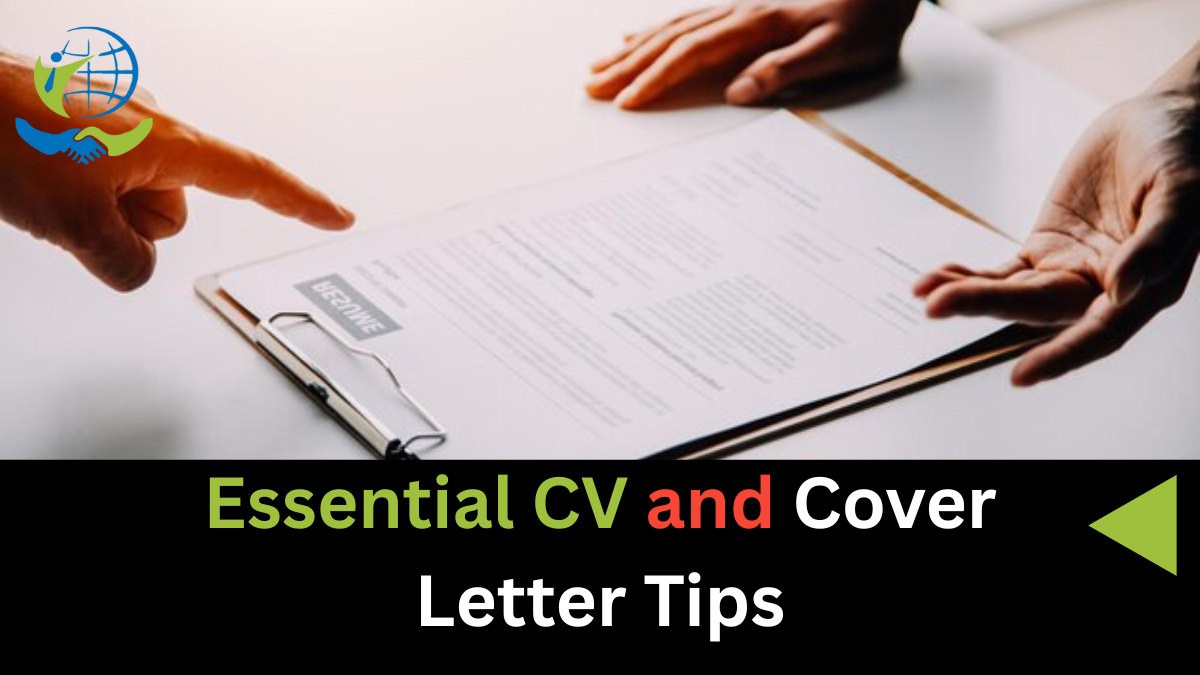Essential CV and Cover Letter Tips for Job Seekers 2025
A strong combination of CV and cover letter is an essential tool for a job application. These two documents allow candidates to introduce themselves and showcase relevant qualifications. They also show why the company should choose them for the position.
Creating powerful CVs and cover letters proves difficult for many individuals. Most candidates struggle to understand how their applications should stand out. Here we will explore CV and cover letter tips to make the application more compelling. These tips work beneficially for job seekers who are targeting internships.
Why CVs and Cover Letters Matter
Recruiters and hiring managers review Job applications by starting their evaluation with candidates' CV's, together with their cover letter. The cover letter functions as a candidate's invitation by presenting application motives. It also provides a suitability assessment and employment passion toward the company.
The usage of AI systems by employers for resume and cover letter keyword searches continues to grow. Any human reviewer would entirely miss an application when candidates skills do not exactly match the vacancy requirements. Job candidates need to spend time on their resume along with a cover letter.
Tips for Writing a CV and Cover Letter
Here are some tips for writing an attractive CV and cover letter. These are as follows:
Customisation
Each job application needs a different CV and letter format. Using generic applications for various positions proves ineffective most of the time. The job advertisement, alongside the description, requires specific modifications to documents. Write about skills in the resume that tie directly to what the firm wants.
This change can be made by carefully reading the ad and requirements. Reuse the essential terms that appear in the original advertisement. Employers who screen candidates through AI systems. In this, they specifically search for specific keywords that appear in applications.
Bad grammar in resumes and cover letters prevents human recruiters from reviewing them. Customising a CV with a cover letter demonstrates candidates' interest in the position.
Properly Address the Cover Letter
When a candidate finds the designated contact mentioned on the business website or posted job listing, then use them. They should address the letter to the Hiring Manager or the Recruitment Team when they do not know the proper recipient names.
Use "Yours sincerely" in the closing statement when establishing a named correspondence at the beginning of the letter. Write "Yours faithfully" as a closing statement when the application process requires default greetings instead of personal names.
Using small, refined elements makes the application more distinguished and proves the candidate's attention to detail.
Structure Properly
A powerful cover letter goes beyond word selection because it depends on how you format the content. A solid cover letter requires division into three main sections. The opening paragraph should include a short introduction and state the purpose of the work.
This introductory section identifies the candidate's identity as the job application candidate to the employer. The middle section must quickly link job-specific skills to the position you want. In this section, describe the important qualifications from the job posting.
After this demonstrates how previous job experience aligns with these requirements. Then the closing sections should include appreciation for the application review. The letter should be direct, flowing, and professional and should use A4 paper.
Clear and Focused
Employers must be able to locate the required information if the resume is in an appropriate format. A professional CV requires a structured layout, together with organised sections. The application needs to remain free of any additional details that do not improve its functionality.
Create a document between one and two pages. A resume should demonstrate the most noteworthy achievements and job-related skills. Explain honest work gaps to employers with a concise explanation. Honest disclosure of work gaps stands out more effectively than unexplained empty sections.
Right Tone
Use professional language throughout your entire cover letter, along with your resume documents. The goal is to project confidence while expressing interest without appearing either relaxed or over familiar.
The cover letter offers the opportunity to show the employer that the candidate understands the organisational values. In the introduction, use a composed approach that combines respectfulness.
Excessive use of slang terms and informal verbalisation should be avoided in professional correspondence. Convey the message with clarity and politeness. A professional tone during communication will lead to better process progression.
Right Contact
Confirm that the application reaches the right department to the right person before submission. Use website information or career pages, and job advertisements to confirm the correct contact details. Contact the hiring team to identify the person responsible for recruitment duties.
Any mistake in sending applications to the wrong department will appear unprofessional. It will also create a misleading impression on the recipient. The application may face complete rejection if it is sent to the wrong contact.
Taking time to correctly direct the CV and cover letter to the appropriate person. It showcases candidates' interests, which employers value.
Templates
To start the application process, use online templates for reference while creating a sample cover letter. The website's prospective has a range of effective examples of CVs. These examples cover different industries at varying experience levels. The resources provide users with guidelines to create personalized cover letters that produce significant results.
Using templates as inspiration remains critical. Replace all content to match the qualifications along with the targeted job. Avoid using provided templates or business samples by simply pasting their content. Employers easily recognise generic and over-formalised applications.
These are some of the tips to write an effective CV and Cover Letter.
Common Mistakes to Avoid
A cover letter should extend beyond restating the resume content.
A major mistake occurs when job seekers fail to list either their employer's name or the position they seek.
Failing to research the company properly or a lack of motivation to work at the organisation.
The lack of a professional tone and the use of unprofessional, informal wording create problems.
These are some of the common mistakes that candidates will make.
Final words
A powerful CV and cover letter require dedicated work, yet produce excellent results. Candidates must write a clear explanation showing the employer that they represent their best candidate choice.
Carefully consider employer needs during every step of the cover letter. Describe profile together with qualifications for an interview through your CV and cover letter. Give proper time to the cover letter by matching it to the job requirements.
FAQs
How long should a cover letter be?
A cover letter must be on A4 paper.
How should I format my CV?
The format of the CV should be in clear headings, bullet points, and a professional layout.
Can AI scan my cover letter and CV?
Many employers use different AI software to filter candidates' applications.
How can I make my CV stand out?
By using specific keywords, structured design, and strong accomplishments.
What is the ideal length for a CV?
The CV is a maximum of 1 to 2 pages.


.jpeg)


